The TP-Link Archer AX50 ($ 149.99) is the rare moderately priced router that finds the sweet spot between budget-class and high-end models. It provides the latest Wi-Fi 6 technology and delivered solid speeds on our throughput tests. It also comes along with a few features that are typically found on more expensive models, such as link aggregation, lifetime parental controls, and anti-malware software, and USB connectivity. Its file-transfer performance could be faster, but that doesn’t prevent it from winning our Editors’ Choice award for affordable Wi-Fi 6 routers.
Where To Buy TP Link Archer AX50 Router:
More Features Than Most Affordable Routers
The Archer AX50 looks exactly like the Archer AX10 that we reviewed earlier this year. It has a two-tone glossy and matte black finish with textured grilles, four adjustable antennas, and six small LED indicators. It measures 1.5 by 10.2 by 5.3 inches (HWD) and has four gigabit LAN ports around back, together with a WAN port, a USB 3.0 port, a power button and power jack, a reset button, and a Wi-Fi/WPS button. None of the ports are multi-gig, but the TP-Link Archer AX50 Router does support link aggregation, a nice feature for a router in this price range.
The TP-Link Archer AX50 Router is a dual-band AX3000 router capable of reaching max (theoretical) speeds of as high as 574Mbps on the 2.4 GHz band and up to 2,402 Mbps of the 5GHz band. It’s powered by a dual-core CPU and uses the latest Wi-Fi 6 (802.11 ax) technology, including OFDMA packet transmissions, MU-MIMO simultaneous data streaming, direct-to-client beamforming, and Smart Connect (band steering). It doesn’t support WPA3 encryption, however.
As with the Archer AX11000 gaming router and the Deco X20 mesh system, the TP-Link Archer AX50 Router comes with TP-Link’s HomeCare suite of anti-malware, parental control, and QoS software. The anti-malware software lets you apply Malicious Content Filters and allows you to quarantine infected clients and view security alerts, while the QoS settings offer Gaming, Streaming, Surfing, and Chatting presets that make it easy to assign bandwidth priority. Homecare’s Parental Controls offer Child, Pre-Teen, Teen, and Adult presets that contain age-appropriate website filters for gambling, social networking, gaming, chat rooms, and other adult content. You can also check the browsing history and set access schedules and time limits for each client.
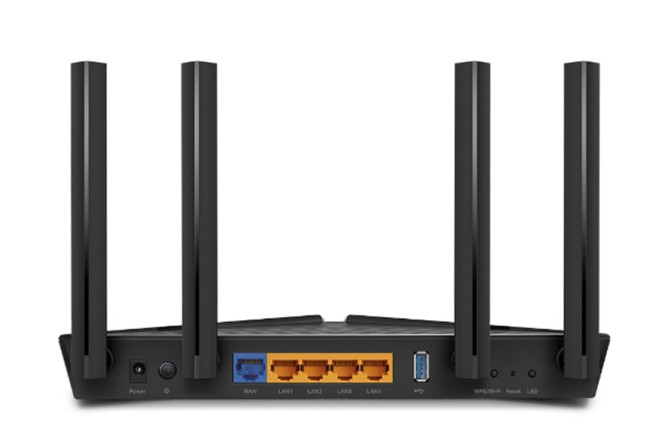
You can handle the TP-Link Archer AX50 Router with the TP-Link Tether mobile app for Android and iOS devices, or you can use the web console. Both are simple to use, but the web console offers a few more advanced options like DHCP Server, NAT Forwarding, Firewall, and IPv6 settings.
The Tether app opens to a My Devices screen that lists all of your TP-Link routers. Tap the TP-Link Archer AX50 Router panel to open the home screen, which displays a network map and panels for both Wi-Fi radio bands and the guest network. To access 2.4 GHz or 5GHz wireless settings, tap the appropriate panel. Here you can disable the band and enable, rename it, change the Wi-Fi password, and enable Smart Connect, which creates a single SSID and password for both radio bands.
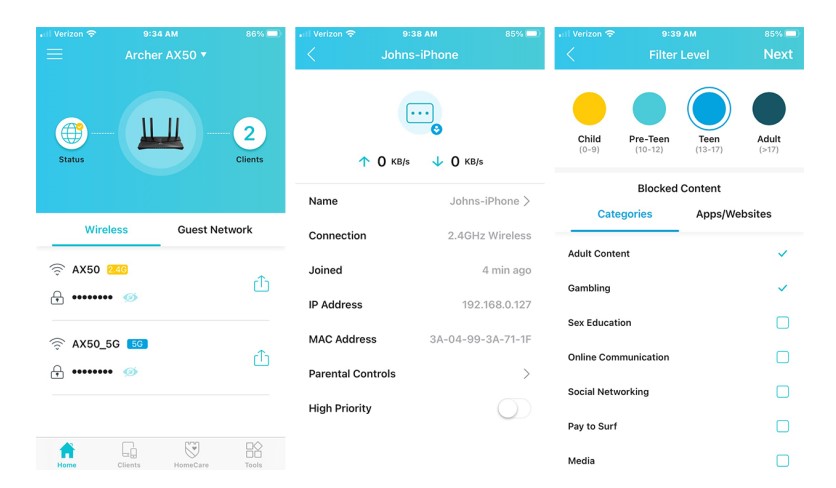
At the bottom of the home screen are the Clients, HomeCare, and Tools buttons. Tap the Clients button to see a list of connected devices and their IP addresses. Tap any client to see which band it’s using, together with its MAC address and join date. Here you can enable parental controls for the device, give it QoS priority, and block internet access. HomeCare allows you to create parental control profiles, enable anti-virus options, and assign QoS presets to clients. The Tools button takes you to a screen where you can access all of the above settings, create a guest network, and run network diagnostics.
Solid Throughput and Signal Strength
The TP-Link Archer AX50 Router is simple to install no matter whether you use the TP-Link Tether mobile app or the web console. I used Tether and started by downloading the app and creating a TP-Link ID. I then tapped the plus icon in the upper right corner of the My Devices screen to add a new device, selected Router and followed the instructions to power off my modem, connect the router to the modem, and power everything up. When the LEDs were all solid, I tapped Next and used my phone’s Wi-Fi settings to connect to the router’s SSID. I entered the password found on the Wi-Fi Info card, returned to the app, and tapped I’m Connected. The app found the router immediately and I entered a new router password. I selected my connection type (Dynamic IP), named both radio bands, and created new Wi-Fi passwords. After a brief firmware update, the installation was complete.
The Archer AX50 Router turned in a respectable performance on our throughput tests. Its speed of 109Mbps was faster than the D-Link DIR-LX1870 (100Mbps), the Linksys MR 7350 (78Mbps), and the D-Link DIR-X1560 (80Mbps). At a distance of 30 feet, the Archer AX50 Router led the pack with a speed of 42Mbps.
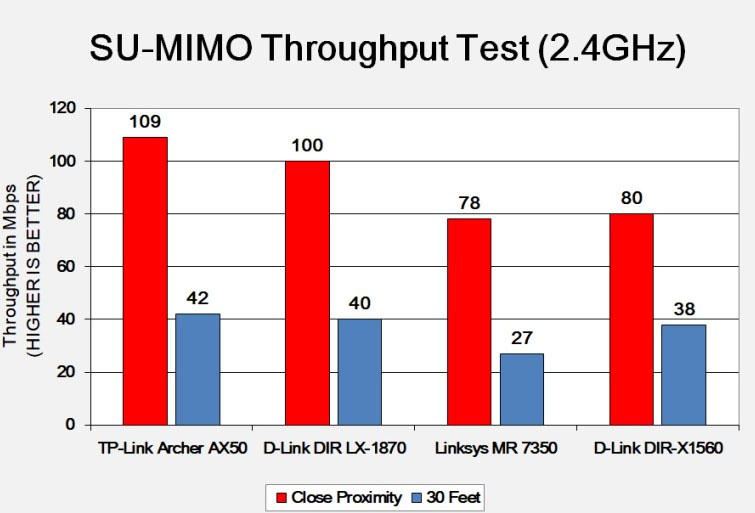
The Archer AX50’s speed of 689Mbps on the 5GHz close-proximity test was again faster than the D-Link DIR LX-1870 (569Mbps) and the Linksys MR7350 (662Mbps), but slightly behind the D-Link DIR-X1560 (712Mbps). That said, its speed of 231Mbps on the 30-foot test took top honors.
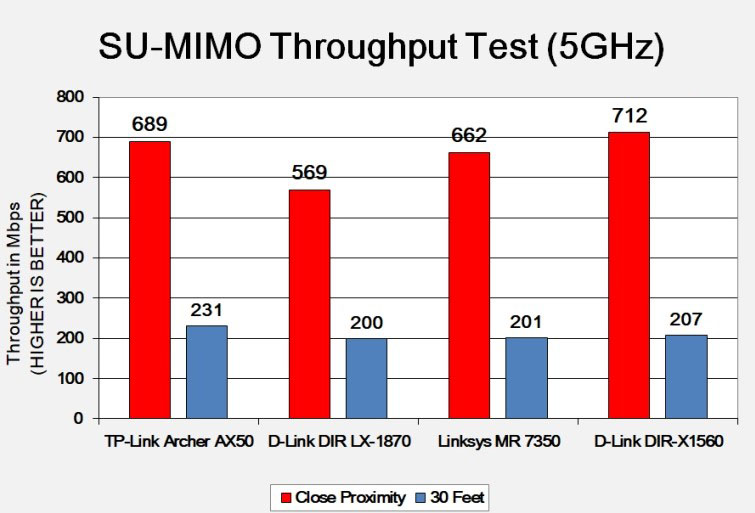
To test file-transfer performance, we move a 1.5 GB folder including a mix of music, video, photo, and document files between a USB drive and a wired desktop PC, both directly connected to the router, and the time it’s read and write speeds. The Archer AX50 handled a write speed of 42MBps, which is decent, but not as fast as the Asus RT-AX86U (52 MBps) or the Linksys MR-7350 (74MBps). On the reading test, the Archer AX50 Router garnered a faster 44MBps, but that still couldn’t match the RT-AX86U (66MBps) or the MR-7350 (80Mbps).
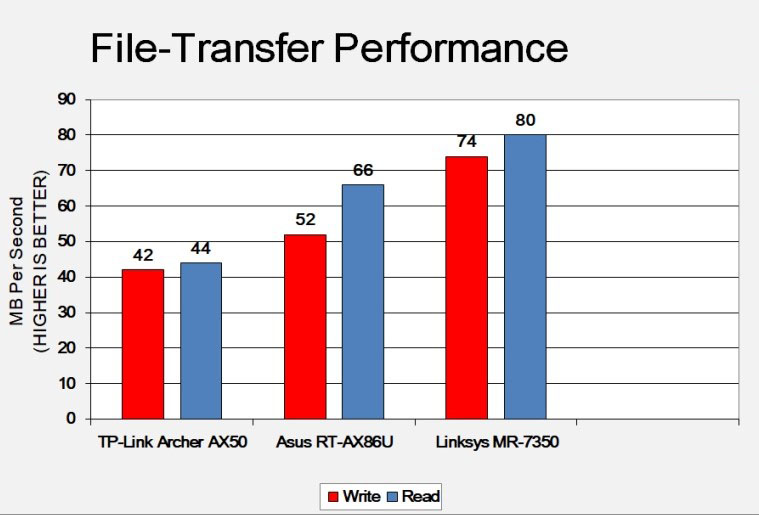
We use an Ekahau Sidekick Wi-Fi diagnostic device and Ekahau’s Survey mobile app to test router signal strength. This combination generates heat maps that illustrate the router’s 2.4 GHz and 5GHz signal strength throughout our test home.

The circle on the heat map represents the location of the router, and the colors represent signal strength, with dark green being the strongest signal and lighter yellow being the weaker signal. Gray areas show no measurable signal reception. As shown on the 2.4 GHz map above, the TP-Link Archer AX50 delivered a strong 2.4 GHz signal throughout most of our test home, but the signal became slightly weaker in the far corners of the house and garage. The router’s 5GHz radio delivered better range, in which the signal remained relatively strong throughout the entire house.
The Best Wi-Fi 6 Router for the Price
The TP-Link Archer AX50 provides some nice high-end features for a $150 router, consisting of USB connectivity and multiple LAN ports with link aggregation. It also provides a free lifetime subscription to HomeCare, which protects your network from malware and prevents your family from visiting undesirable websites, and it delivered strong throughput performance in testing. Its file-transfer performance is just adequate, and it doesn’t support WPA3 encryption. Nevertheless, the Archer AX50 is still an excellent router that’s worthy of our Editors’ Choice award for midrange Wi-Fi 6 models.
None of the ports are multi-gig, but the TP-Link Archer AX50 Router does support link aggregation, a nice feature for a router in this price range.
The TP-Link Archer AX50 Router is a dual-band AX3000 router capable of reaching maximum (theoretical) speeds of as high as 574Mbps on the 2.4 GHz band and as high as 2,402 Mbps of the 5GHz band. As with the Archer AX11000 gaming router and the Deco X20 mesh system, the TP-Link Archer AX50 Router comes with TP-Link’s HomeCare suite of anti-malware, parental control, and QoS software. I then tapped the plus icon in the upper right corner of the My Devices screen to add a new device, selected Router and followed the instructions to power off my modem, connect the router to the modem, and power everything up. The app found the router immediately and I entered a new router password.

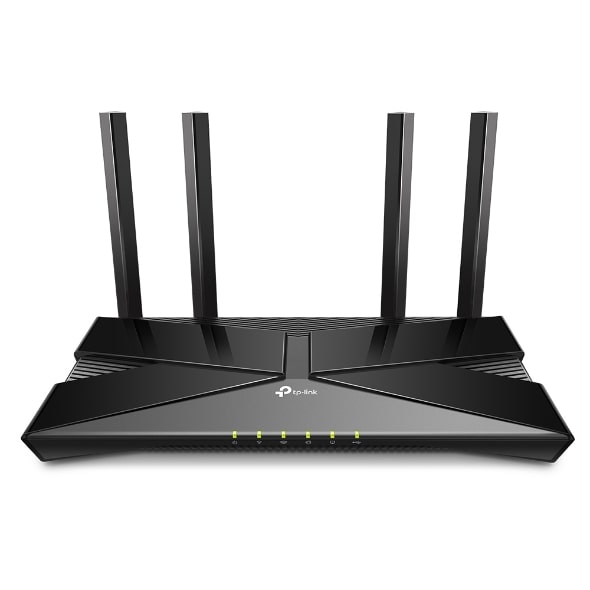




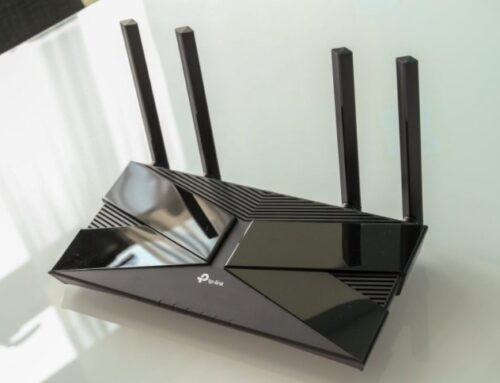

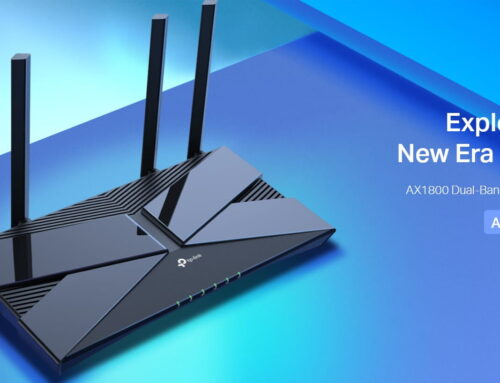
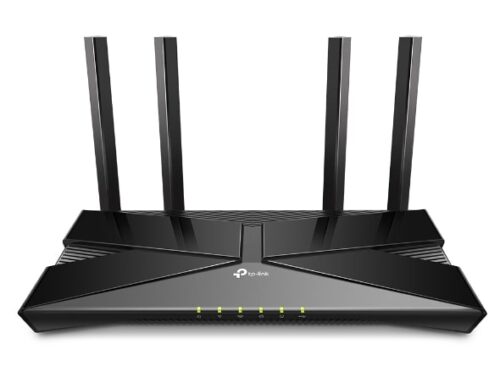
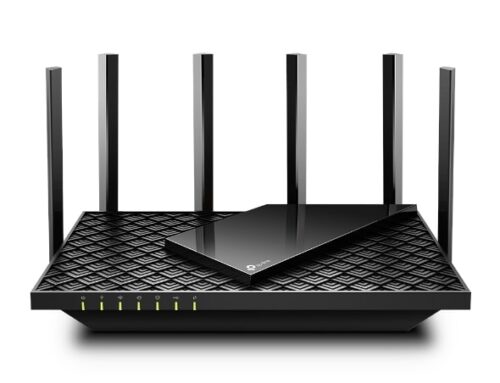
Leave A Comment